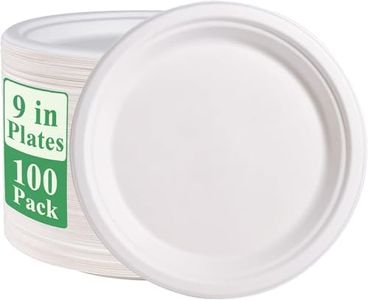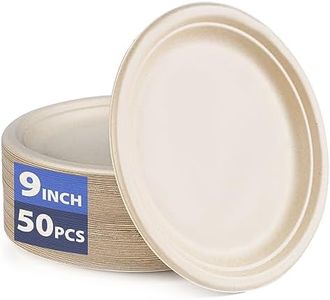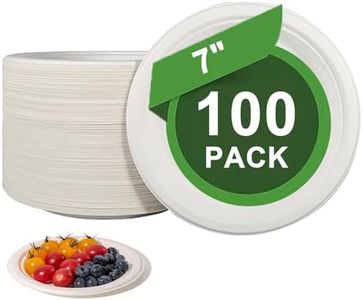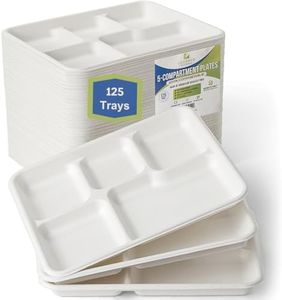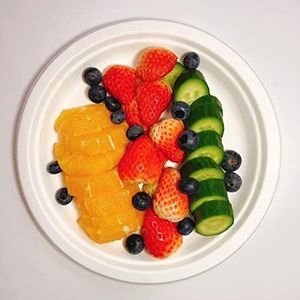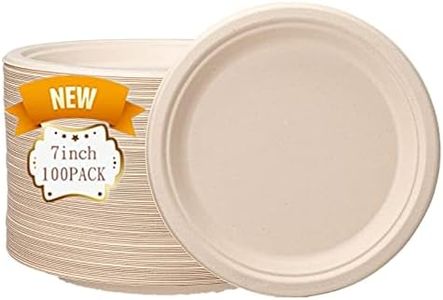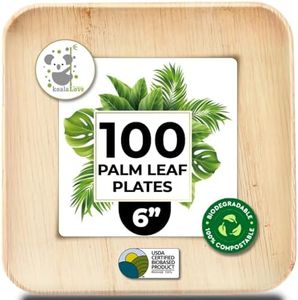We Use CookiesWe use cookies to enhance the security, performance,
functionality and for analytical and promotional activities. By continuing to browse this site you
are agreeing to our privacy policy
10 Best Compostable Paper Plates
From leading brands and best sellers available on the web.Buying Guide for the Best Compostable Paper Plates
Choosing compostable paper plates is a great step towards hosting eco-friendly gatherings or simply reducing your household's environmental impact. When selecting the right plates, consider where and how you will use them, as different situations might call for plates with varying levels of durability, size, or compostability. Focus on the specifications that impact performance and sustainability, making sure your pick meets your needs for different foods and occasions while aligning with your eco goals.Material CompositionMaterial composition refers to what the plate is made from, such as sugarcane bagasse, bamboo fibers, or recycled paper. This is crucial because it affects the plate's strength, compostability, and environmental impact. Plates made from pure plant fibers are usually more easily compostable and sturdier than those with plastic linings. When the labels say '100% compostable,' look for certifications or clear labeling to ensure they break down fully in home or industrial compost settings. Choose a material that suits your composting setup and your preference for natural, chemical-free items.
Compostability CertificationCompostability certification indicates whether the plate can safely break down in compost without leaving toxic residues. Certifications like ASTM D6400 or EN 13432 mean the plate meets strict standards for compostability. Some plates are only compostable in industrial facilities, while others can go in your backyard compost. If you plan to compost at home, make sure the product is labeled as home-compostable. Your choice should match your composting method—if you use municipal facilities, industrial compostability is fine; for home composters, only select products labeled 'home compostable.'
Durability (Strength and Leak-Resistance)Durability covers how well the plate holds up to different types of food, especially wet or heavy dishes. Strong, leak-resistant plates are often thicker and can handle gravy, sauces, and hefty servings without bending or leaking. Lighter plates might be fine for snacks or dry foods but could collapse under a slice of pizza or salad with dressing. Consider what you'll be serving most often: if it's hearty meals or outdoor events, opt for high-durability plates; for simple snacks or desserts, lighter options may work well.
Plate Size and DepthPlate size and depth determine how much food you can comfortably serve. Small plates (around 6 inches) are suitable for desserts or appetizers, while medium (8-9 inches) and large plates (10-12 inches) fit full meals or buffets. Deeper plates help with soupy, saucy, or messy dishes, avoiding spills. Think about your most common use-case: for dinners or gatherings with varied foods, bigger and deeper plates are best. For kids, snacks, or portion control, smaller plates suffice.
Appearance and TextureAppearance and texture include the plate's color, finish, and whether it feels smooth or has a natural, rough texture. Some compostable plates look almost white and clean, while others are more rustic and tan. This may not affect function, but can matter for parties, events, or if you want a particular look for your meal setup. Choose what matches your style or event; keep in mind that natural finishes often indicate fewer chemical treatments.
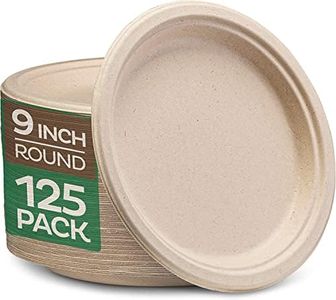
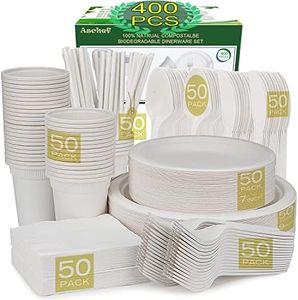
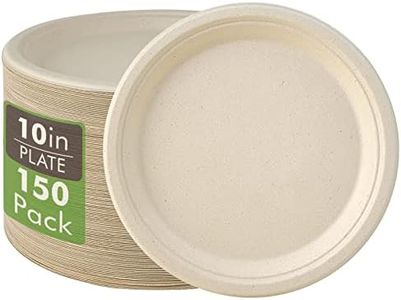

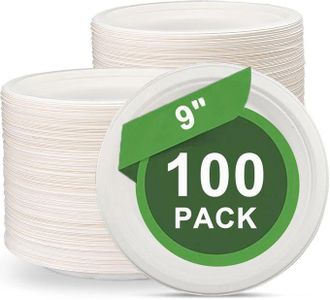
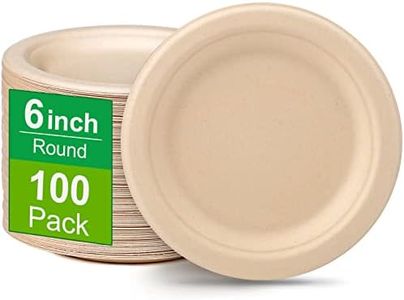

![Stack Man 100% Compostable 7" Paper Plates [125-Pack] Heavy-Duty Quality Natural Disposable Bagasse, Eco-Friendly Made of Sugar Cane Fibers, 7 inch, Brown](https://images-proxy.bestreviews.guide/0ubA1yYSc0T-oDeTWSMpElOAigc=/0x300/https://m.media-amazon.com/images/I/41l3OpiHxVL._AC_CX679_.jpg)
